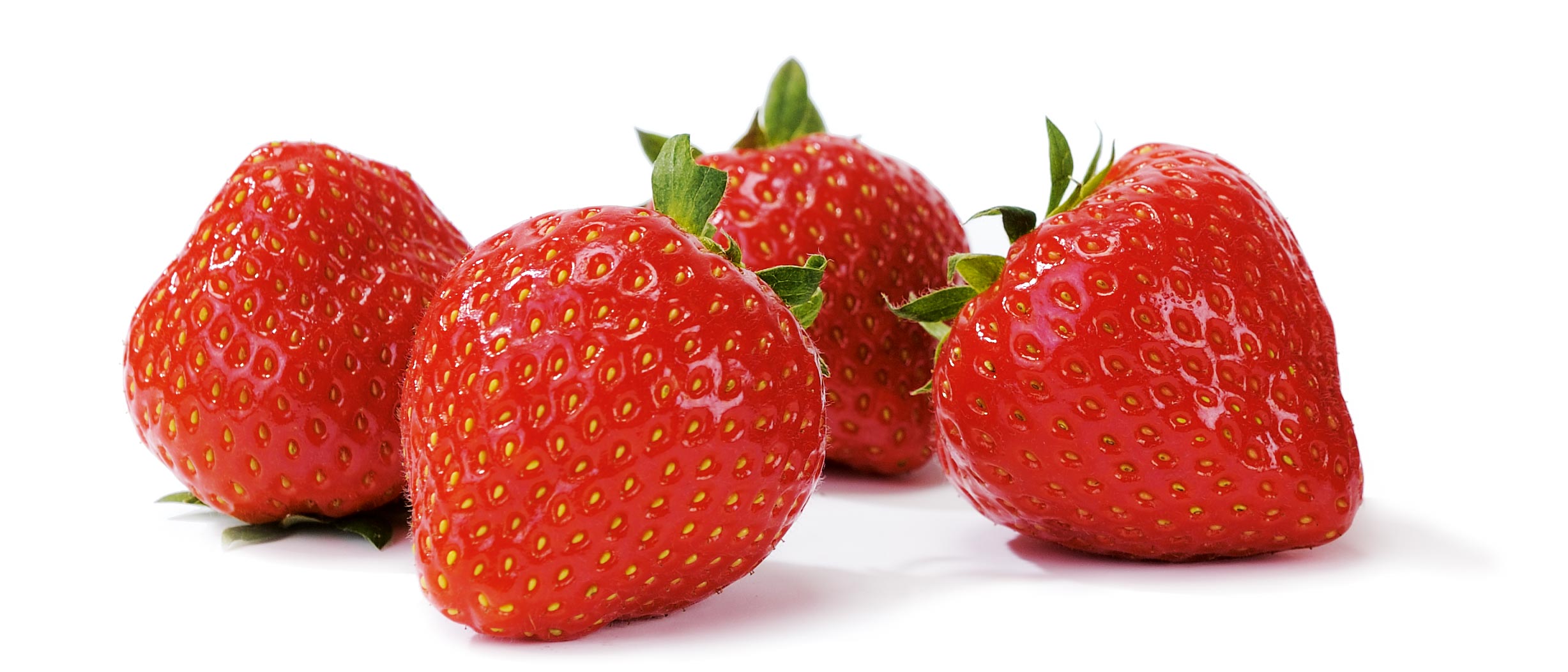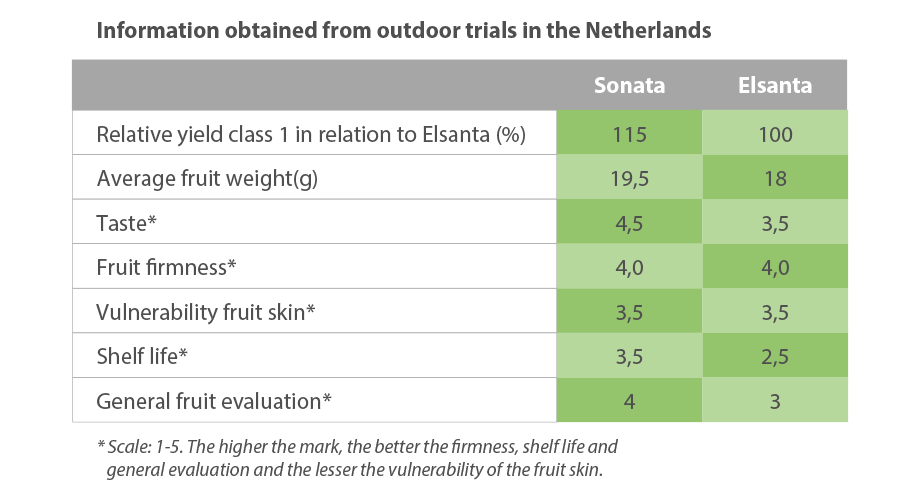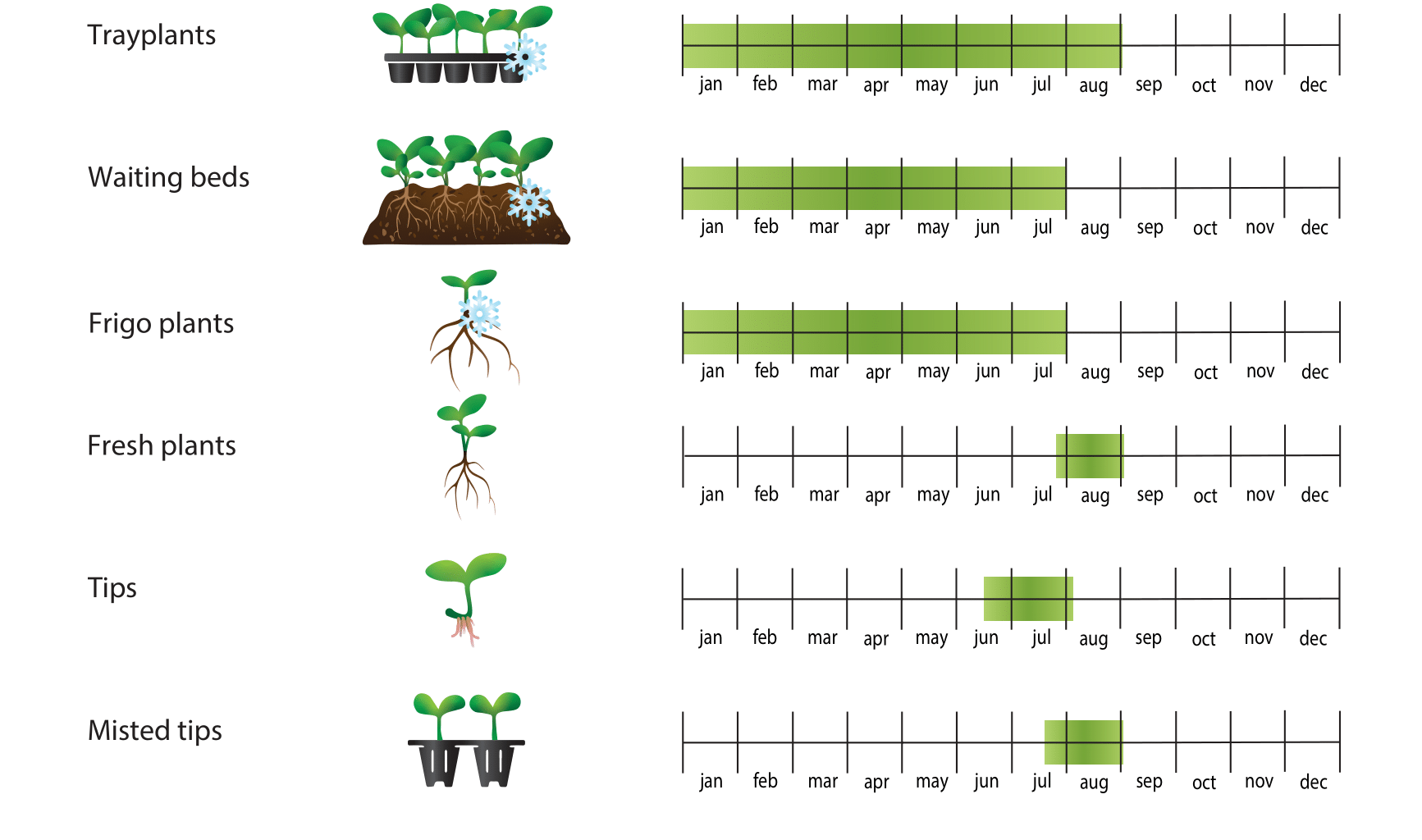Sonata


Flowering and harvest
Sonata produces flowers of good quality. Its flowering and harvest periods are the same as those of Elsanta, but with a better spread of the harvests. The clusters usually remain just under the foliage. The strawberries tolerate rain very well, with little risk of their skin splitting. Sonata is a little more vulnerable in hot weather, but problems can be prevented by increasing the picking frequency and harvesting the strawberries while they are still orange. They will then continue to colour for a while after being picked.
High productivity
Sonata produces good yields, largely thanks to the high percentage of the fruit of prime quality. The strawberries are easy to pick and require little sorting, implying substantial savings in labour costs. Early forcing will result in virtually no loss of yields or quality whatsoever.
Fertilisation and care
Sonata needs large amounts of magnesium, manganese and iron in both multiplication and production. The variety is not very susceptible to powdery mildew (Podosphaera aphanis). Extra attention will have to be paid to controlling and preventing crown rot (Phytophthora cactorum), in particular in propagating tray plants. It is important to plant outdoor crops at the right depth because the plants have fairly short rhizomes. As far as grey mould (Botrytis) and root rot (Rhizoctonia) are concerned, effective preventive control is important in the period between flowering and harvest, especially in crops grown in tunnels or continuous-cropping systems.
Experiences: suitable for many cropping systems
Sonata produces beautiful strawberries in many different cropping systems. The variety is often used for early cropping and for the first cooled crops. Sonata is very suitable for early forcing with plastic sheets. It is less suitable for delaying harvests with the aid of straw. Sonata produces heavy crops in normal and frigo-plant systems. In greenhouses, Sonata is used mostly for early hothouse crops. Sonata also does very well when grown with lighting. The variety is extremely suitable for both types of greenhouse cultivation thanks to its excellent setting and high production. The absence of misshapen fruits moreover implies high returns. Early planting for continuous cropping in late July/early August will ensure sufficient colouring of the fruit, with the added advantage of a long enough period of low temperatures for good growth the following spring. Sonata’s fairly good frost tolerance makes it suitable for cultivation in Scandinavia, too. So all in all, Sonata is a variety that produces attractive, delicious strawberries in many cropping systems.
Available as:




